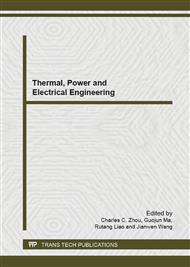p.1069
p.1074
p.1081
p.1085
p.1090
p.1097
p.1101
p.1105
p.1110
Prototype Test for Confirming the Concept of HTS Magnetically Controlled Saturable Reactor
Abstract:
With the development of high voltage long distance transmission and expansion of the grid, the reactive power compensation device with excellent adjustment function becomes more and more important. This paper aims to study a high temperature superconducting magnetically controlled saturable reactor (HTS MCSR), which has a wide range of stepless reactive power capacity adjustment and little operating loss. An adjustable reactor topology of three split limbs core was proposed. Based on research of structure and theory, the operating characteristic was obtained. A normal conductive prototype was manufactured. Simulation and test were done to verify the adjustment characteristic of this reactor. The results confirm the concept and provide an experimental basis for developing HTS MCSR in the future.
Info:
Periodical:
Pages:
1090-1094
Citation:
Online since:
August 2013
Authors:
Keywords:
Price:
Сopyright:
© 2013 Trans Tech Publications Ltd. All Rights Reserved
Share:
Citation:


